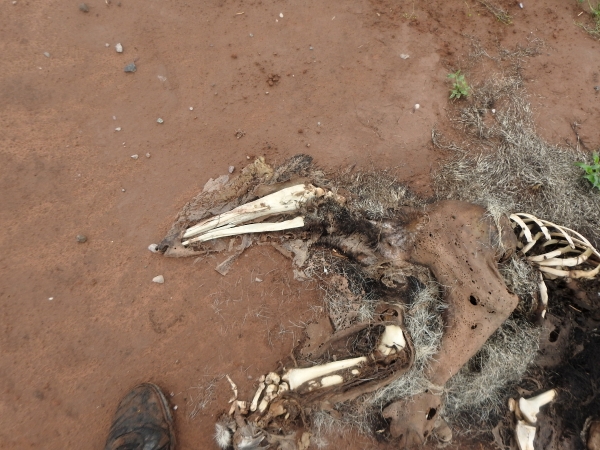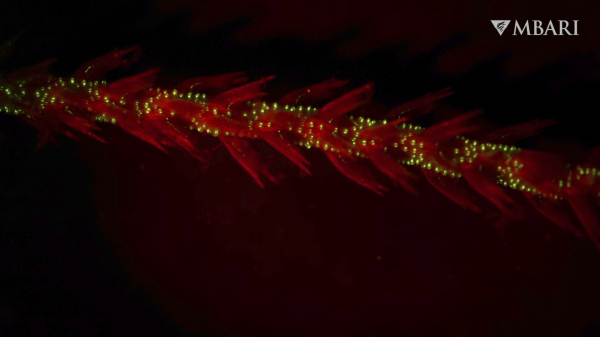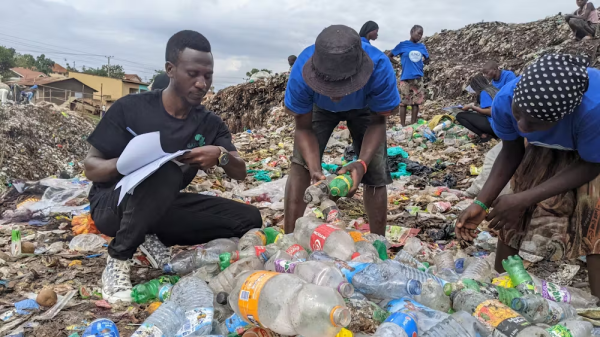Analysis by Timothy J. Killeen
- Floodplains are extraordinarily productive because they are the connection between aquatic and terrestrial ecosystems. They are socially and economically vital because tens of thousands of families depend on their natural resources for their livelihoods.
- However, placer mining – as Killeen explains in this section – generates catastrophic impacts when miners remove and turn over topsoil as they search for gold sediments. The most optimistic estimate is that 350,000 hectares of forest and wetlands have been lost in the Pan Amazon region as a result.
- Although visible on the banks of rivers and their headwaters, the damage caused by mercury is invisible when it comes to the health of miners, their families and communities. In reviewing 33 studies conducted in the Tapajós watershed, Killeen found that high levels of mercury were widespread.
- Remediation can be very costly economically and politically, as governments need to take measures against illegal mining and protect affected communities.

Floodplains are extraordinarily productive because they are the interface between aquatic and terrestrial ecosystems. They are remarkably diverse because they integrate a mosaic of lakes, marshes, palm swamps and inundated forests, which create the complex food webs that support fish populations. Floodplain habitats are socially and economically vital because tens of thousands of families depend upon their natural resources for their livelihoods. The impacts from placer mining are catastrophic to floodplains because miners overturn the top layer of soils to expose the gold-bearing placer sediments, leaving behind a desolate moonscape.
A placer mine typically occupies a floodplain in its entirety, extending from terrace to terrace and expanding upstream and downstream over dozens of kilometers. A common variant consists of a dredge mounted on a barge that exploits the channel bed of larger rivers that drain wildcat mining landscapes. The combination of placer mines in the headwaters and dredge-barges working downstream can convert a clear-water riparian ecosystem into a silt-laden and polluted river (e.g., the Tapajós).

At least 350,000 hectares (about 864,800 acres) of forest and wetland habitat have been lost in the Pan Amazon due to placer mining activities. This value, which is derived from satellite images, underestimates the true area, however, because the historical archive does not have images of sufficient spatial resolution to capture very small-scale mining camps (e.g., Roraima), nor monitor the impact from the hundreds of barges that ply the region’s rivers. Remote sensing technology does, however, capture the trend in the level of disturbance, which has increased in recent years due to market demand for gold and the relaxation of environmental enforcement in Brazil. The historical archive also exposes the permanence of placer mining impacts: Floodplains destroyed in the mid-1980s remain devoid of vegetation in 2020.
Mercury: slow motion suicide
The impact from wildcat mining on floodplain habitats is visually obvious. In contrast, the effects of mercury poisoning are silent and, for a time, invisible. Eventually, however, the toxicity will manifest in the health of the miners, their families and nearby communities.
Artisanal miners use mercury at the final stage of their processing system when they see bits of gold in sediment. Mercury is added to the earthen mixture because it absorbs gold to form a physical amalgam; gold is recovered by vaporizing the mercury, usually over an open flame. Mercury can be inhaled, ingested or absorbed through the skin, but there are technologies that do not depend upon mercury and others to keep it from escaping into the environment. Unfortunately, artisanal miners do not have access to these technologies and large amounts of mercury pollute Amazonian rivers each year.
Elemental mercury is noxious, but under anaerobic conditions microbes transform mercury into an organic compound, methylmercury, that is far more dangerous to humans. Methylmercury is a stable molecule that is a hundred times more likely to be absorbed by an organism; once ingested, it is incorporated into living tissues rather than eliminated as waste. This leads to the phenomenon known as ‘biomagnification’, an eco-physiological process that causes mercury to accumulate in organisms over time and become concentrated in long-lived carnivores situated near the top of food webs. In humans, mercury is transported freely throughout the body and can cross the placenta where it will impact the development of a foetus. In adults, it causes neurological disorders, including clumsiness, difficulties in speaking, hearing impairment, blindness and death.

Mercury poisoning is endemic to communities on the rivers located within or downstream from placer mining landscapes. In a review of 33 studies conducted in the Tapajós watershed, the elevated presence of mercury was ubiquitous. The highest levels were documented in individuals directly involved in gold mining, but it also impacted non-miners who rely on fish as a food source. In the preferred fish-food species, methylmercury was consistently above the maximum level recommended by the World Health Organization (WHO). Elevated levels of mercury have been documented in migratory fish populations far removed from mining areas and even in urban populations. One recent study revealed that 75% of the population of Santarem had elevated levels of mercury with some residents having four times the limit established by the WHO.
Mercury contamination is a long-term threat, which has actually increased over the last decade due to the increase in gold prices and the subsequent boom in wildcat mining. One study estimated that ~200 tonnes of mineral mercury are released each year, but, as more data becomes available and the activity increases, that figure may surpass 500 tonnes. If true, the amount released into the environment over four decades would sum to approximately 8,000 tonnes. Of this total, about 40 % has been dumped into the Amazon River Basin, while another 40%has been expelled into rivers of Coastal Guianas, with the remainder into the Caroni River in Venezuela.
Social impacts of wildcat mining
Efforts to improve environmental compliance would almost immediately improve the health and social welfare of wildcat miners and their families. This includes children who work as employees or as participating members of a family enterprise. The list of activities pursued by children is long and depressing; it includes working as peons in underground mines, as underwater divers operating suction hoses on river dredges and as operators of the processing equipment used to separate the mineral gold from the crushed rock, as well as manipulating the mercury that threatens their development. The exact number of under-age children working in illegal mines is not known with any kind of precision, but estimates run as high as 20% of the workforce in Peru and Brazil.
Because they are often organized as family enterprises, women participate in mining ventures and, not infrequently, assume managerial responsibilities. Their participation provides a pathway for introducing better practices, particularly if they are made aware of the risk to their family’s health. Other, well-known, social impacts include forced labor and sexual trafficking, crimes that often assume a high-profile aspect of the law-and-order initiatives that are periodically organized in Brazil and Peru.

The most salient impact, at least in international forums, is the encroachment of wildcat miners on the Indigenous and traditional communities that occupied these landscapes prior to the discovery of gold. In the 1980s, most Indigenous communities were overwhelmed, and some leaders negotiated access agreements to their traditional lands and, in the process, captured a portion of the revenues. These arrangements were routinely ignored, however, and Indigenous groups quickly soured on them. Native communities are now the most vocal opponents of mining, although they continue to be overwhelmed by miners willing to resort to violence.
Mitigation and remediation
Placer mining was widely practiced during the gold rushes of the nineteenth and early twentieth century in North America, and created a massive environmental liability similar to now that being generated across the Pan Amazon. In North America, the cost of remediation was assumed by the federal and state governments, estimated at hundreds of billions of dollars. Placer mining is still used by small-scale miners in Alaska and the Yukon, who are obligated to restore a functional wetland after they have exploited the resource. Remediation is planned before operations so that landscape can be reconfigured at a reasonable cost; compliance is guaranteed with a bond held by the state. In some jurisdictions, placer miners go beyond remediation and seek to restore quasi-natural habitats by accessing incentives from civil society that typically also open high-value markets. The social and economic differences between Alaska and the Amazon are obvious, but solutions will be based on broadly similar strategies.
Confronting the illegality that pervades wildcat-mining landscapes is daunting. The state is either partially or totally absent. Imposing an unpopular policy is complicated by the number of individuals that directly or indirectly depend on the wildcat-mining economy. In jurisdictions heavily dependent on wildcat gold mining, residents don’t view it as illegal, but as one of many informal activities. Initiatives that target specific communities or subsectors, such as women or Indigenous miners, have generated positive results but have not changed the structural elements that define the sector. Law-and-order campaigns organized in Brazil and Peru have made headlines – and have decreased illegal activity for a period of time – but they have not changed the economic and cultural dynamic that motivates individuals to defy the law.

Governments have been more successful in registering individual miners, or their associations, in national mining databases. Miners participate because they desire a legal document validating their claim and, presumably, are aware that it provides authorities with information that will facilitate the collection of royalty taxes. Royalty receipts have increased across the region, although it is widely assumed miners are underreporting their production. Registration and tax collection are the first steps in reforming mining practices. Guyana has succeeded in registering most of its small-scale miners and is using that information to engage them in educational and technical programmes to improve their productivity and, in the process, eliminate the use of mercury.
There have been several research projects that seek to identify practices for remediating the environmental impacts of placer mining. Although they have demonstrated it to be technically feasible, they have also shown that it is socially and technically challenging. A study in Madre de Dios, Peru, found that a barren floodplain, nineteen years after the cessation of mining operations, required investments in soil reclamation and tree planting of between US$ 2,000–3,500 per hectare. Other studies that track reforestation efforts over multiple years report costs twice that amount. Considering there are more than 75,000 hectares (cca 185,300 acres) of abandoned placer mines in the Madre de Dios, it would require at least US$250 to US$500 million to restore them to a semblance of a functioning natural ecosystem. A large sum, perhaps, but less than 2% of the value of the gold extracted from the Madre de Dios over the last 30 years.
“A Perfect Storm in the Amazon” is a book by Timothy Killeen and contains the author’s viewpoints and analysis. The second edition was published by The White Horse in 2021, under the terms of a Creative Commons license (CC BY 4.0 license).
To read earlier chapters of the book, find Chapter One here, Chapter Two here, Chapter Three here and Chapter Four here.

Chapter 5. Mineral commodities: a small footprint, a large impact and a great deal of money
- Mineral commodities: the wealth that generates most impacts in the Pan Amazon | Introduction March 21st, 2024
- The environmental and social liabilities of the extractive sector March 26th, 2024
- Mining in the Pan Amazon in pursuit of the world’s most precious metal April 4th, 2024
- Illegal mining in the Pan Amazon: an ecological disaster for floodplains and local communities April, 9th




You must be logged in to post a comment.